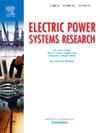Type-3 wind turbine generator model with generic high-level control for electromagnetic transient simulations
IF 4.2
3区 工程技术
Q2 ENGINEERING, ELECTRICAL & ELECTRONIC
引用次数: 0
Abstract
Electromagnetic transient (EMT) simulations are instrumental in providing researchers and engineers with detailed data about the dynamic behavior of power grids, necessary for analysis, planning, and risk mitigation. Such simulation studies become even more relevant with the increased number of inverter-based resources integrated into the grid. To achieve reliable simulation results, accurate and accessible models are needed, since existing generic models do not always provide accurate transient response, especially during fast transients. This paper proposes a model for the type-3 wind turbine generator, otherwise known as doubly-fed induction generator (DFIG), that combines the benefits of the generic wind turbine model developed by the Western Electricity Coordinating Council (WECC), with the extra accuracy of a detailed electrical model for the DFIG. WECC models are widely used by planners in their phasor-domain model databases. The proposed WECC-DFIG model is designed to be used in EMT-type software, and due its inheritance of the high-level control system, it can reuse control settings from an existing WECC model without re-tuning. It improves accuracy during transients, such as balanced and unbalanced faults.
具有通用高级控制的3型风力发电机模型用于电磁暂态仿真
电磁瞬变(EMT)仿真有助于为研究人员和工程师提供有关电网动态行为的详细数据,这是分析、规划和降低风险所必需的。随着越来越多的基于逆变器的资源集成到电网中,这种模拟研究变得更加相关。为了获得可靠的仿真结果,需要精确和可访问的模型,因为现有的通用模型并不总是提供准确的瞬态响应,特别是在快速瞬态时。本文提出了一种3型风力发电机的模型,也被称为双馈感应发电机(DFIG),它结合了西方电力协调委员会(WECC)开发的通用风力发电机模型的优点,以及DFIG详细电气模型的额外准确性。在规划人员的相域模型数据库中,WECC模型被广泛使用。所提出的WECC- dfig模型设计用于emt类软件,由于其继承了高级控制系统,可以重用已有WECC模型中的控制设置,而无需重新调整。它提高了瞬态时的精度,例如平衡和不平衡故障。
本文章由计算机程序翻译,如有差异,请以英文原文为准。
求助全文
约1分钟内获得全文
求助全文
来源期刊

Electric Power Systems Research
工程技术-工程:电子与电气
CiteScore
7.50
自引率
17.90%
发文量
963
审稿时长
3.8 months
期刊介绍:
Electric Power Systems Research is an international medium for the publication of original papers concerned with the generation, transmission, distribution and utilization of electrical energy. The journal aims at presenting important results of work in this field, whether in the form of applied research, development of new procedures or components, orginal application of existing knowledge or new designapproaches. The scope of Electric Power Systems Research is broad, encompassing all aspects of electric power systems. The following list of topics is not intended to be exhaustive, but rather to indicate topics that fall within the journal purview.
• Generation techniques ranging from advances in conventional electromechanical methods, through nuclear power generation, to renewable energy generation.
• Transmission, spanning the broad area from UHV (ac and dc) to network operation and protection, line routing and design.
• Substation work: equipment design, protection and control systems.
• Distribution techniques, equipment development, and smart grids.
• The utilization area from energy efficiency to distributed load levelling techniques.
• Systems studies including control techniques, planning, optimization methods, stability, security assessment and insulation coordination.
 求助内容:
求助内容: 应助结果提醒方式:
应助结果提醒方式:


